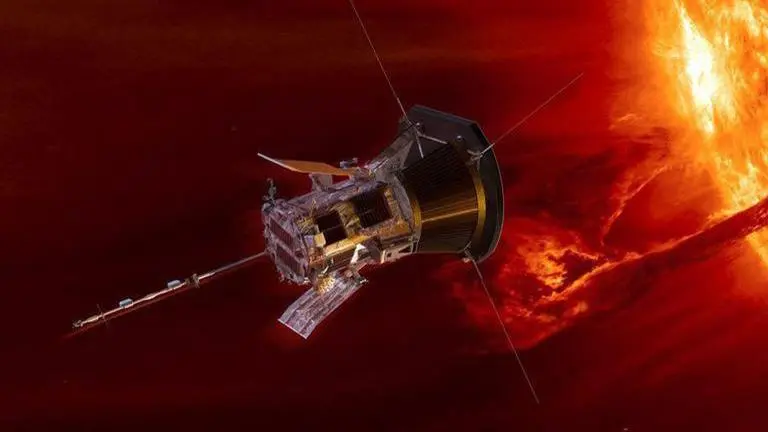Updated 15 December 2021 at 16:37 IST
NASA marks historic milestone as spacecraft ‘touches’ Sun; Here's why it's important
In a giant leap for solar science, NASA's space probe entered, flew through the Sun’s upper atmosphere, and sampled particles and magnetic fields there.
- Science News
- 3 min read

For the first time in history, NASA announced that it has achieved a feat that was once thought to be impossible. On Tuesday, the US space agency informed that its Parker Solar Probe touched the corona of the Sun, which has an extreme environment that's roughly 2 million degrees Fahrenheit.
As per a press note, the rocketship successfully entered and flew through the Sun’s upper atmosphere - called the corona - on April 28, and sampled particles and magnetic fields there, marking one major step and one giant leap for solar science.
What does this mean for solar science?
NASA has said that the success of the Parker Solar Probe represents much more than technological innovation. In its press release, the US space agency explained that even though the Sun had largely remained inaccessible to scientists until now, the spacecraft’s landmark achievement has restored hope about solving age-old mysteries about the red-hot star. Experts believe that the milestone will provide scientists with deeper insights into Sun’s evolution and its impact on the solar system.
“Understanding where and how the components of the fast solar wind emerge, and if they’re linked to switchbacks, could help scientists answer a longstanding solar mystery: how the corona is heated to millions of degrees, far hotter than the solar surface below,” NASA said.
Even though astrophysicists already know that Sun’s energy comes from the churning magnetic fields bubbling up through the surface of the Sun, it is still not known how the Sun’s atmosphere absorbs energy. Therefore, the historic feat will now help experts with deeper insights. It will also help them know more about things like solar flares, and high-speed solar winds, which often have a direct impact on Earth where they disrupt power grids and radio communication.
Advertisement
“My instinct is, as we go deeper into the mission and lower and closer to the Sun, we're going to learn more about how magnetic funnels are connected to the switchbacks,” Stuart Bale, professor at the University of California, Berkeley, said. “And hopefully resolve the question of what process makes them,” he added.
Solar Probe Cup: Instrument that helped NASA verify its spacecraft reached Sun
NASA scientists believe that Parker’s future closer passes may also reveal even more clues about switchbacks and other solar phenomena. It will allow scientists a glimpse into a region that’s critical for superheating the corona and pushing the solar wind to supersonic speeds. Such measurements from the corona will be critical for understanding and forecasting extreme space weather events, the US space agency said.
It should be mentioned here that the historic moment was achieved thanks to a large collaboration of scientists and engineers, including members of the Center for Astrophysics, Harvard & Smithsonian (CfA) who built and monitored a key instrument onboard the probe: the Solar Probe Cup. The cup collects particles from the Sun's atmosphere that helped scientists verify that the spacecraft had indeed crossed into the corona. NASA claimed that the step matches the Moon landing as this allows scientists to understand more about the Sun and what it is made of.
Advertisement
(Image: @NASA/Twitter)
Published By : Bhavya Sukheja
Published On: 15 December 2021 at 16:37 IST
